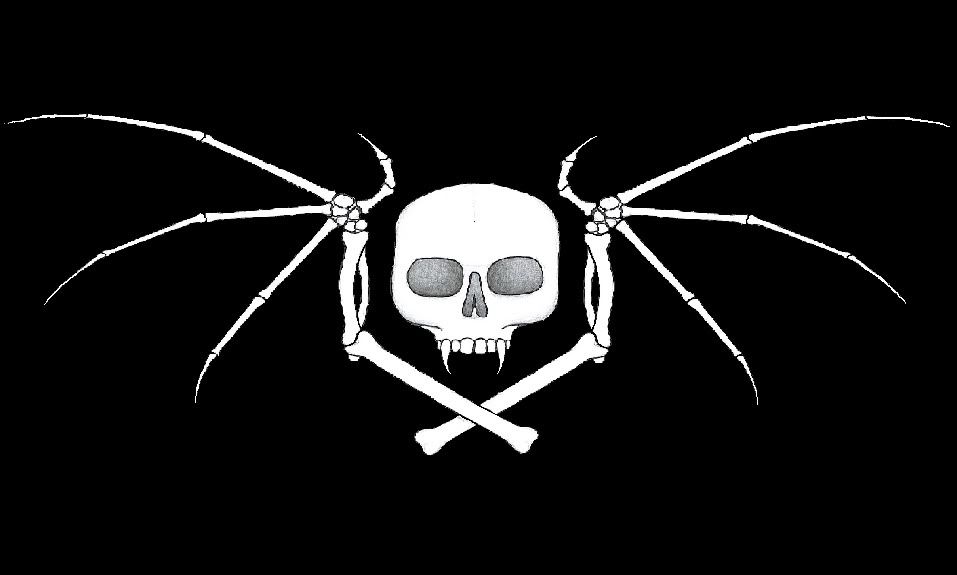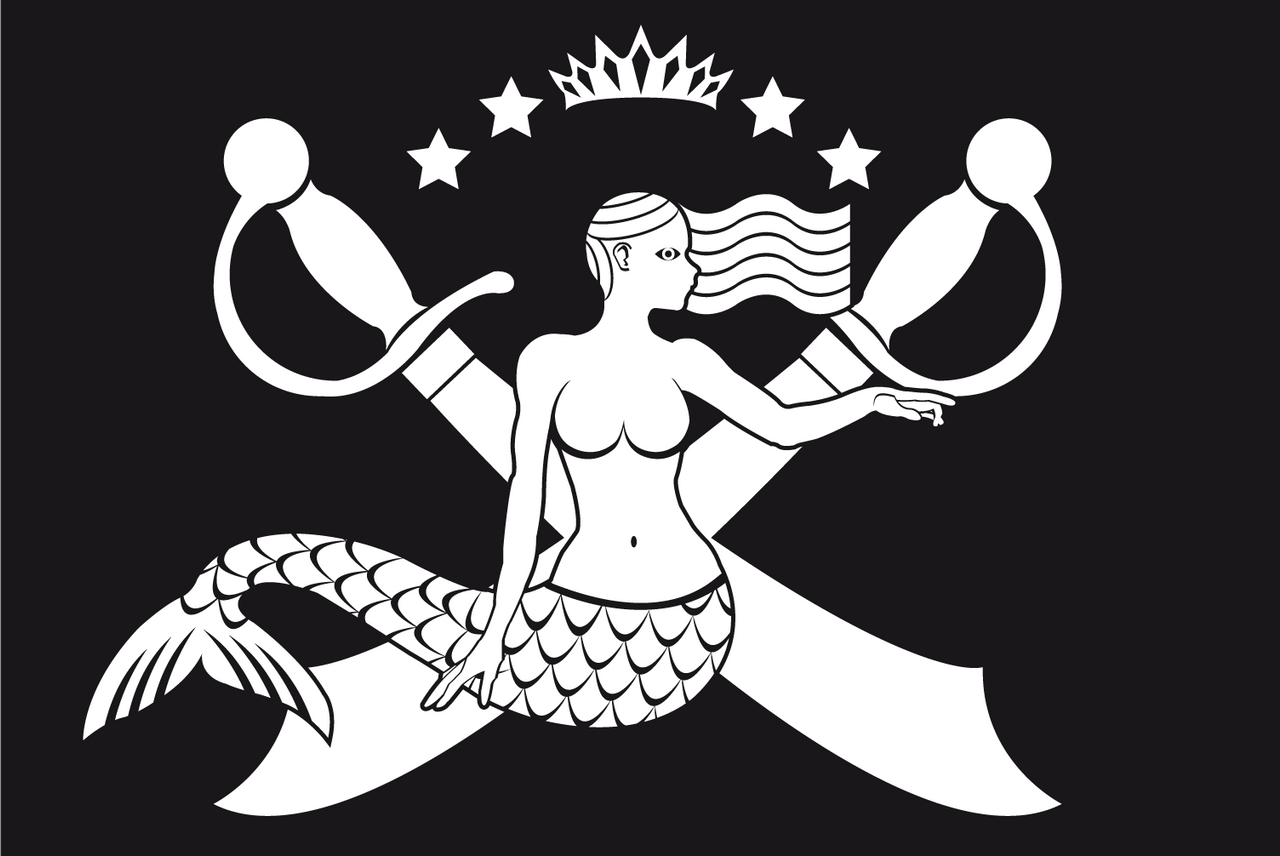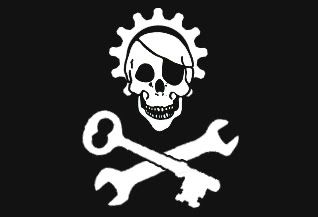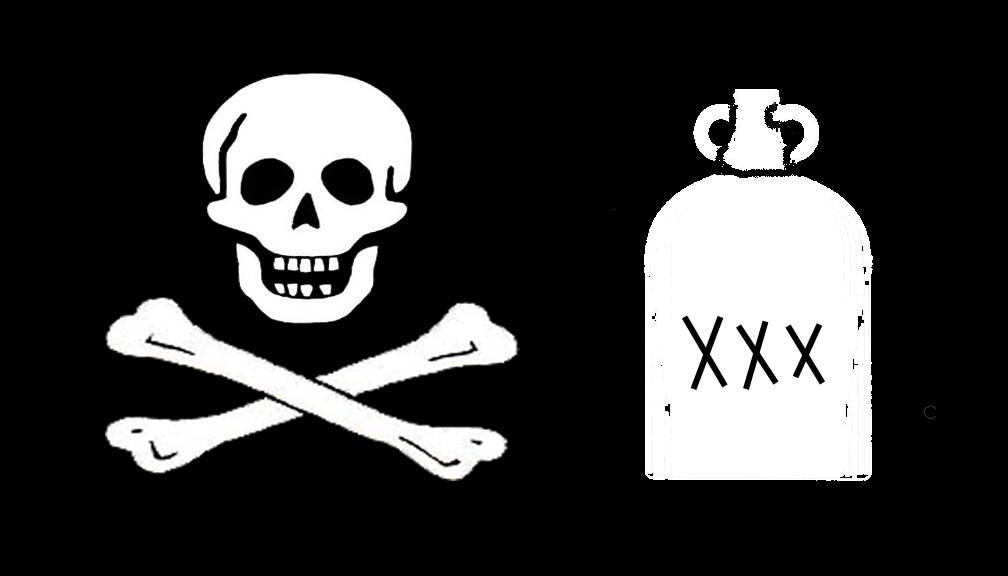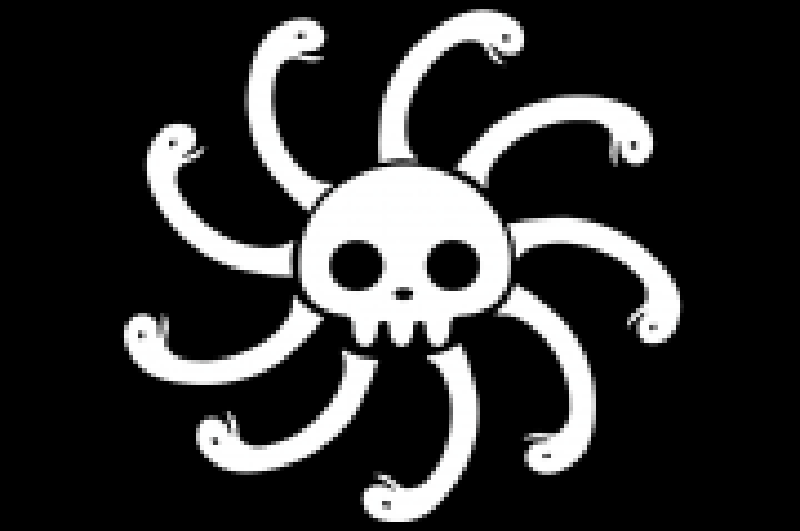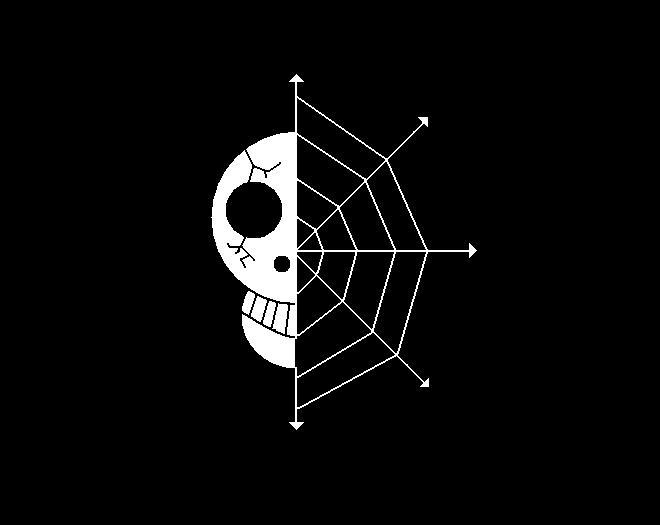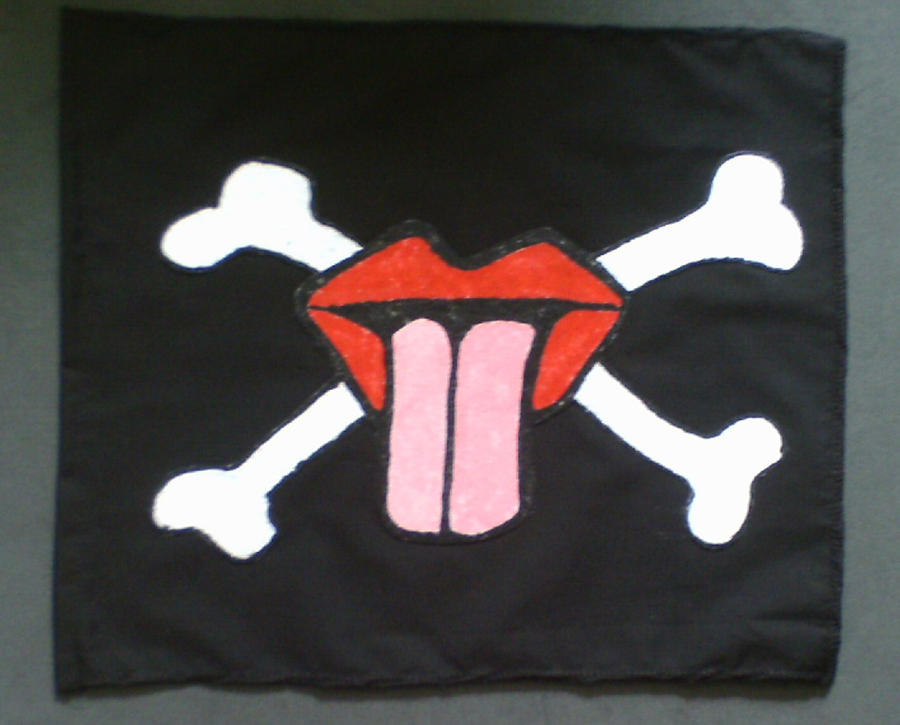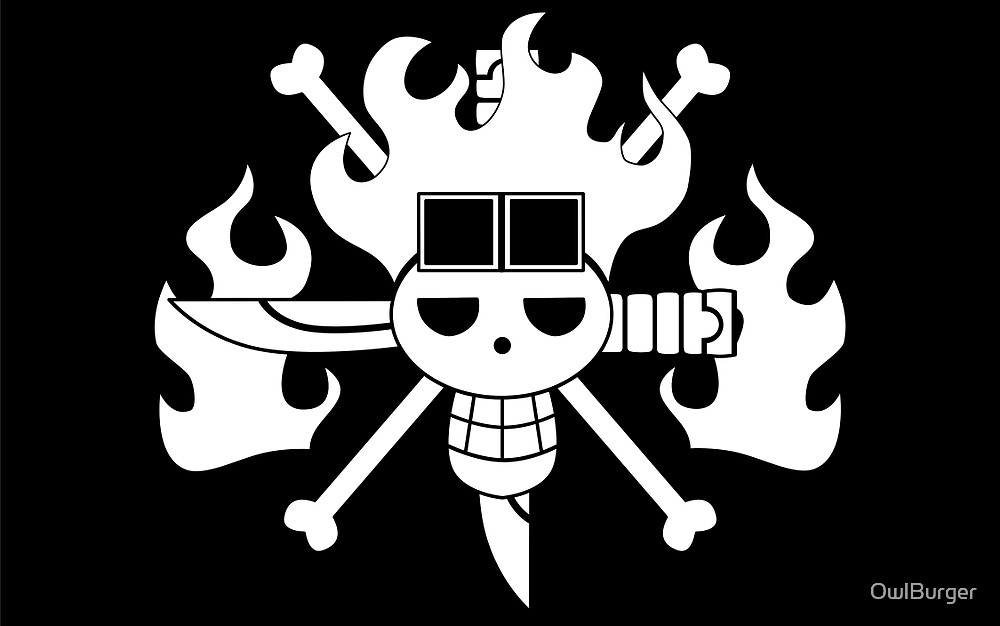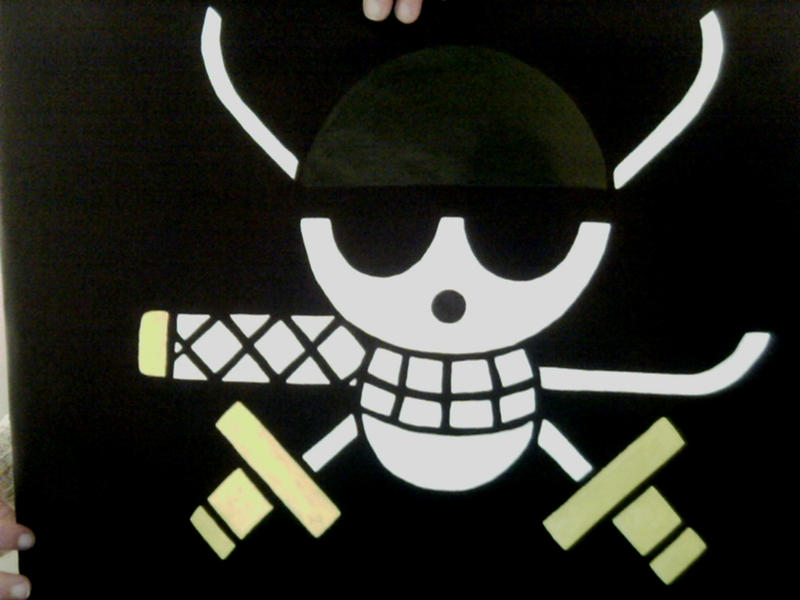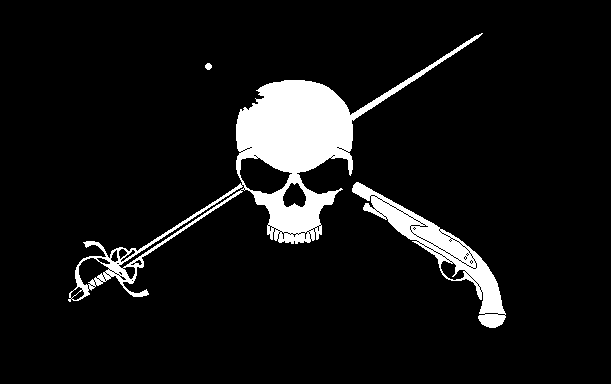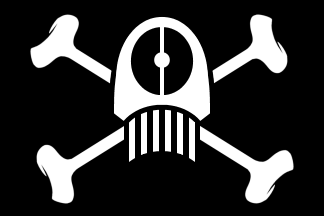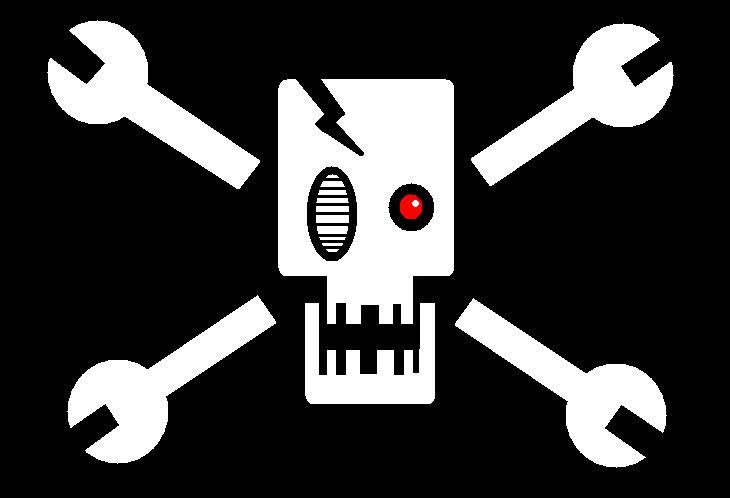ZOMBEEZ
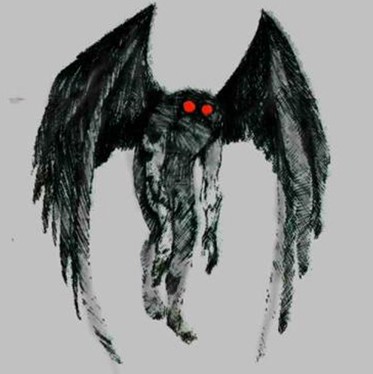
No. Enc.: 2d4 (4d6)
Alignment: Chaotic
Movement: 120' (40')
Fly: Varies, see below
Armor Class: 8
Hit Dice: 2
Attacks: 1
Damage: 1d3
Save: L1
Morale: 12
Hoard Class: None
XP: 29
Zombees are winged mutants of flying creatures that have been parasitized by giant mutant Apocephalus borealis flies. They are typically fairly weak, but are dangerous because they occur in small swarms.
While they do consume other species as food sources, they will primarily only attack winged creatures and mutants. If there are not mutants with wings present among those encountered, they will only attack for food on a roll of 1 on 1d6.
Mutations: Wing Development, revised see below
GHUL

No. Enc.: 1d6 (2d8)
Alignment: Chaotic
Movement: 90' (30')
Armor Class: 6
Hit Dice: 3
Attacks: 2 (claws)
Damage: 1d8/1d8
Save: L1
Morale: 9
Hoard Class: Special, see below
XP: 80
GHULs, or "Ghastly Humanoid Underground Lifeforms" are believed to be devolved pure humans who survived the apocalypse by seeking shelter of elaborate cave systems. They will attack and eat any humanoid creatures that enter their lairs.
While GHULs can be found primarily in large cave systems, they are also encountered deep in the pre-apocalypse subterranean systems of major cities (e.g. sewers, subway tunnels, basement, underground facilities, storm drains, etc.). They may also rarely be encountered at night on the surface near their lairs.
GHULS have an odd hoard class, as follows: CP - 1d00 (70%), SP - 1d00 (5%), GP - 1d00 (5%), Artifact - 1 (25%) drugs, chemicals, and foodstuffs and junk.
Mutations: Natural Weapons, Troglodytism (NEW)
Waste Husk

No. Enc.: 1d4 (1d12)
Alignment: Chaotic
Movement: 120' (40')
Armor Class: 5
Hit Dice: 4
Attacks: 3 (2 claws, bite)
Damage: 1d4/1d4/1d4
Save: L2
Morale: 10
Hoard Class: XIX
XP: 245
Waste Husks are the dessicated remains of desert wanderers who have been driven mad by the harsh desert environment coupled with whatever toxins, mutagens, biologicals and radiation they've come across in their travels. They appear as humanoids suffering from extreme hunger that have their skin torn and abraded by the desert sands and heat, clad in rags and castoff clothing.
Eternally hungry, these creatures roam the wastelands that formed them, searching for any signs of life that they can consume. They often attack by running down their prey, rather than ambush, however, since they are immune to the sand storms and other weather that wracks these wastelands, they may be able to surprise victims on a roll of 1-5 on 1d6 during any weather that could conceal their approach.
While they generally wander the wasteland, they occassionaly can be found lairing in sand-swept or partially buried ruins out among the wastes, as well as sources of water such as an oasis or well.
Mutations: Energy Absorption (Heat) (CoTW), Natural Armor, Predatory Scent
DEATH SAILOR

No. Enc.: 1d10 (4d10)
Alignment: Chaotic
Movement: 60' (20')
Swim: 120' (40')
Armor Class: 8
Hit Dice: 5
Attacks: 1 (weapon)
Damage: 1d6 or weapon type
Save: L2
Morale: 8
Hoard Class: XXII
XP: 500
Death Sailors are the waterlogged corpses of drowned seafarers. They appear as bloated, dark blue or purple, hideous-looking humanoids with wild, kelp-like tangles of hair, sharp teeth, and eyeless heads.
These creatures have an intense hatred of those who still sail on the surface of the sea, and will attack any vessel they think they can overwhelm. Death Sailors are typically armed with nautical weapons. Roll 1d12 to determine what weapon they have: 1 - Belaying Pin, 2 - Boarding Axe, 3 - Grappling Hook, 4 - Cutlass, 5 - Harpoon, 6 - Trident, 7 - Hawaiian Sling, 8 - Boarding Pike, 9 - Speargun, 10 - Harpoon Gun, 11 - Polespear, 12 - Marlin Spike.
Mutations: Increased Strength, Aquatic Mutation (NEW)
CYBONES

No. Enc.: 1d4 (1d4)
Alignment: Chaotic
Movement: 90' (30')
Armor Class: 8
Hit Dice: 6
Attacks: 2 (laser, electricity)
Damage: 6d6/4d6
Save: L3
Morale: 10
Hoard Class: None
XP: 1070
Cybones are what you get when a Cyborg Commando's biological parts have been damaged (generally by toxin, poison, or radiation) to the point where there is little drive left in the biological portion of the cyborg. The result is a slower, slightly weaker version of the Cyborg Commando, with only the barest of machine intelligence operating the body.
Mutations: Thermal Vision, Increased Physical Strength, Energy Ray (electricity)
JACK LANTERN

No. Enc.: 1 (0)
Alignment: Chaotic
Movement: 120' (40') when not mounted
Mounted: As per stead, mount, or vehicle
Armor Class: 7
Hit Dice: 7
Attacks: 1 (weapon)
Damage: 1d6 or by weapon type
Save: L3
Morale: 10
Hoard Class: XXII
XP: 1140
Jack Lanterns are headless humanoids. They can take on a variety of appearances, typically dressing in leather outfits and carrying a 'head.' The head carried varies constantly, roll on the following table to determine what head is carried each time a Jack Lantern (even the same one!) is encountered:
| Roll | Head Type |
| 1 | Jack O' Lantern |
| 2 | Tree Stump |
| 3 | Decapitated Humanoid Head |
| 4 | Helmet |
| 5 | Robot Head |
| 6 | Decapitated Animal Head (roll on any animal table to determine animal type) |
| 7 | Wooden Log carved to look like a face |
| 8 | Carved Turnip |
Jack Lanterns wander the decaying highways and roads of the wasteland searching for a suitable head. No one knows what criteria they use to determine what makes a head suitable, but any Jack Lantern that succeeds in finding a suitable head disappears and is never seen again. They will attack just about any creature in search of a suitable head. They favor edged weapons with which to decapitate their victims.
A wide variety of mounts, steads, and vehicles are used by Jack Lanterns for transportation. While there is no way to be specific, given that any campaign will have different creatures and vehicles present, this quick table will give GMs the basic mount for each Jack Lantern encountered: Roll 1d4: 1 - Common Riding Animal, 2 - Motorcycle, 3 - Hovercycle, 4 - Uncommon Creature used as a stead.
Mutations: Aberrant Form (Detached Limb) (NEW), Fuse Body Part (Head only) (NEW)
VAULT DRAUGR

No. Enc.: 1d4 (4d4)
Alignment: Chaotic
Movement: 90' (30')
Armor Class: 6
Hit Dice: 8
Attacks: 1 (cold touch or by weapon)
Damage: 1d10 or by weapon type
Save: L4
Morale: 10
Hoard Class: XXI
XP: 1560
Vault Draugr are the result of imperfectly cryogenically preserved pure humans stored in cryogenic vaults to avoid the apocalypse. They generally appear as pale, ice-covered humanoids. Essentially brain-dead, they have only the bases instincts.
These creatures tend to attack any other creature they encounter for food, or possibly mating, occasionally both. While they cannot operate complex artifacts, basic melee weapons are well within their capability.
Vault Draugr tend to lair near the cryogenic vaults they were revived in, and are rarely found wandering the wastes.
Mutations: Energy Touch (Cold) (as per Energy Ray, but range is touch), Energy Absorption (Cold) (CoTW)
SANGUINE FIEND
No. Enc.: 1d4 (1d6)
Alignment: Chaotic
Movement: 120' (450')
Armor Class: 2
Hit Dice: 9
Attacks: 3 (claws, bite)
Damage: 1d6/1d6/1d10
Save: L5
Morale: 10
Hoard Class: XVII
XP: 3800
Sanguine Fiends are mutant blood-drinking humanoids. They generally appear as pale humanoid mutants, with sharp teeth or fangs. They may also have other abnormal features, such as pointed ears, glowing eyes, being completely hairless, or having long, pointed fingernails.
These foul beasts hunt other mammalian mutants in order to drink their blood. However, due to their Epidermal Susceptibility, they can only hunt at night.
Sanguine Fiends lair in dark places not easily invaded by sunlight, such as deep caves, completely windowless buildings and structures, or deep in the darkest portions of ruined communities.
Mutations: Increased Physical Strength, Epidermal Susceptibility (Sunlight), Dietary Requirement Change (Blood) see CotTW, Natural Weapon
RADIATION KING
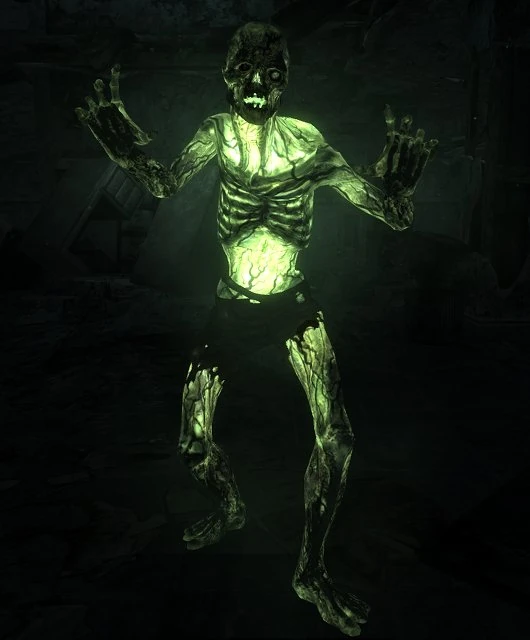
No. Enc.: 1 (1)
Alignment: Chaotic
Movement: 120' (40')
Armor Class: 0
Hit Dice: 12
Attacks: 1 (weapon)
Damage: 1d6 or by weapon type
Save: L6
Morale: 12
Hoard Class: XV
XP: 4400
These animate corpses are generally considered the most intelligent of all the post-apocalyptic 'undead.' They essentially died (cannot regenerate biological material (i.e. heal) by normal means) due to their exposure to massive amounts of radiation.
Radiation Kings are generally uninterested in feeding on other creatures, preferring instead to increase the amount of radiation they are able to absorb. However, if their activities are disturbed, they are quick to deal with opponents with any means at their disposal. Vitims are usually dealt with by the radiation field the creature continually radiates. This field does Class 10 Radiation damage within 10', Class 7 Radiation Damage from 11-20', Class 4 Radiation Damage from 21-30', and Class 1 Radiation Damage from 31-50'.
Radiation Kings lair in highly radioactive areas, though they can sporadically be found wandering the wastes in search of radioactive objects and areas.
Mutations: Energy Field (Radiation, see above), Energy Absorption (Radiation), Extended Lifespan, Dietary Requirement Change (Radiation)
NEW & REVISED MUTATIONS:
Aberrant Form (Detached Limb) (New; Beneficial Physical Mutation)
The mutant can detach one of it's limbs, randomly determined by the following table (Roll 1d4: 1 - arm, 2 - hand, 3 - leg, 4 - head). The limb can be commanded as if telepathy exists between the main body and the limb. Such limbs are limited to one half the movement rate of the main body, have 1/4 the hit dice, and have one meager 1d4 attack per round.
Aquatic Mutation (New; Beneficial Physical Mutation)
This mutation generally manifests as the development of webbed hands and feet, allowing the creature to be able to swim at double land speed. In addition, the creature takes half damage from cold attacks. This mutation does not proved the character with the ability to breathe underwater. Due to the nature of this mutation, the mutant suffers from the effects of Epidermal Dependency (Water) as per Creatures of the Tropical Wastes.
Fuse Body Part (New; Beneficial Physical Mutation)
This mutation allows a character to meld any body part or body part-like object to their body, and use the body part as per the Aberrant Form (Xenomorphism) mutation. The type of body parts that can be fused include arms, legs, wings, heads, tentacles, vines, eyestalks, claws, talons, pincers, prehensile tendrils, stingers, tails, wings, horns, etc. within the limitations of the GM. Roll on the following table to determine how many additional body parts can be fused to the mutant (Roll 1d6: 1 - one, 2 - two, 3 - 1d4, 4 - 1d6, 5 - 2d4+2, 6 - 1d20).
Troglodytism (New; Physical Drawback)
This genetic change generally occurs in creatures who have evolved to live underground. Creatures with this drawback will be very reluctant to venture above ground, and any time they are above ground, whether the sun is out or not, they must make a Saving Throw vs Stun Attacks or flee as far underground as possible at full movement for 1d4 rounds. Additionally, the being is highly sensitive to light, and suffers a –2 penalty to hit when in daylight.
Wing Development (Revised)
The mutant has developed a full set of wings. The mutant may fly while carrying only 25% of his body weight. Roll on the table below to determine type.
Creatures weighing between 150 and 300 pounds lack the utility of Full Wings, but can travel long distances by drifting on air currents (speed depends on wind conditions). The creature can fly 500 miles without rest, but must sleep after landing. The mutant must have at least 1,000' feet of clear ground or 50' of elevation to build the necessary take-off speed. Landing requires a large open space.
Creatures over 300 pounds cannot use these wings for flight, but they leap to a distance of 120’, with a maximum height of 80’.
Mutants with Bone Wings or Elytra can use them to make one physical attack per round, causing 1d6 damage. Bat Wings and Pterosaur Wings have tiny hands or barbs located on the top joint. With the ML’s permission, the hands can be used as manipulator limbs; or, they could both be used in combat, where they do 1d4 damage as either a bash or barb.
Wing Type Table
1 Elliptical Bird Wings This is the most common type of bird wing, often found among passerines. These type of wings are short and rounded, allowing for tight maneuvering and rapid take off when evading predators. With these wings the character can fly with a movement of 120’ (40').
2 High Speed Bird Wings Wings that are short and pointed, requiring rapid wingbeats to provide high speed but with high energy expendeture. This type of wing is found among the fastest birds, such as the peregrine falcon. With these wings the character can fly with a movement of 480’ (160').
3 High Aspect Ratio Bird Wings These wings are longer than they are wide, and are used by birds that generaly soar or glide, such as seabirds. The length of these wings means that the creature requires a longer taxi in order to become airborne, at least 1000' of clear ground or 50' of elevation. With these wings the character can fly with a movement of 90’ (30').
4 Soaring Bird Wings Shorter than high aspect wings, these wings have slots at the end of the wing to reduce drag, allowing the avian to have shorter take off characterstics. Wings of this type are commonly found among the larger inland birds, such as eagles and vultures. With these wings the character can fly with a movement of 180’ (60').
5 Bat Wings These wings are thinner than those of birds, which allows mutants with these wings to maneuver accurately and more quickly than birds. With these wings the character can fly with a movement of 120’ (40').
6 Pterosaur Wings Wings similar in design to bird wings, but much more leathery, and generally larger. With these wings the character can fly with a movement of 180’ (60').
7 Dragonfly Wings The mutant’s two pairs of wings double her flight speed to 240’ (80’). However, they are very fragile: any hit from behind or while flying has a 50% change of tearing the wings, and making them useless for one week. But they do heal, unlike insect wings.
8 Beetle Elytra These wings have a protective case, which could be anything from bone or chitin to leathery skin flaps. When the mutant initiates flight, his Elytra open to reveal the more delicate wings beneath. Flight speed is slow, 60' (20'), but without the chance of being damaged in ground combat. If the mutant is flying, there is still a 50% chance the wings are damaged and made useless by a ranged attack. These wings often buzz loudly, which can be heard for quite a distance.
9 Fly Wings These insect wings are a single pair of membranous and transparent wings. They can be damaged as per Dragonfly Wings. With these wings the character can fly with a movement of 120’ (40').
10 Bee/Wasp Wings While at first glance, these wings appear similar to Fly Wings, they actually consist of two pairs of wings held closely together by hooks. They can be damaged as per Dragonfly Wings. With these wings the character can fly with a movement of 150’ (50').
11 Butterfly/Moth Wings With the most diverse variety of shapes (and coloration patterns) in insect wings, these pair of dual wing sets are generally coupled together, with the forewing forcing the hindwing to move in the same direction. These wings are covered in scales which makes them somewhat more resistant to damage than other insect wings. With these wings the character can fly with a movement of 180’ (60').
12 Bone Wings These wings are extensions of the mutant’s skeleton, making them heavier and tougher than most wings. A strong interlacing web of fine bones connects the support structure, allowing the mutant to fly. Due to her rugged wings, the mutant gets a 2-point AC bonus when attacked from behind. But the weight reduces flight speed to only 90’ (30’).

















